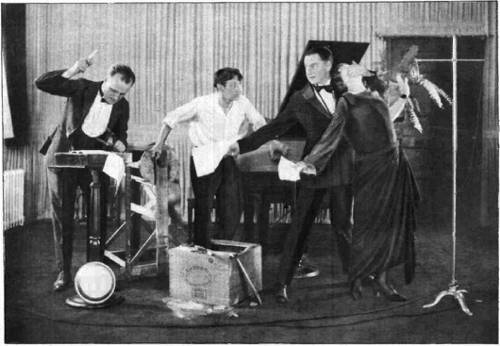
FAQ About The Role of Radio Plays in Early Entertainment

What are radio plays?
Radio plays are scripted audio dramas that were broadcast on the radio. Unlike traditional plays meant for the stage, radio plays rely exclusively on audio, including dialogue, music, and sound effects, to tell a story. The lack of visual elements meant creators had to be adept at painting pictures with sound and words.

When did radio plays become popular?
Radio plays became popular in the early 20th century, particularly during the 1920s to the 1950s, known as the "Golden Age of Radio." During this period, radio was a primary source of entertainment and information for the public, and radio plays were a significant part of the programming lineup.

Why were radio plays important in early entertainment?
Radio plays were crucial in early entertainment because they provided an accessible form of storytelling that reached wide audiences. During a time when television was not yet available, radio plays offered an immersive auditory experience that brought stories to life in homes across the world. They shaped the way stories were told and consumed and laid the groundwork for future audio and visual media.

How did radio plays influence modern storytelling?
Radio plays influenced modern storytelling by demonstrating the power of sound to convey emotion, setting, and drama. Techniques developed in radio such as using sound effects to create atmosphere, and dramatic timing in dialogue, are still used in today’s audio books, podcasts, and even in film and television production. They taught storytellers the importance of engaging an audience's imagination through audio alone.

What are some famous examples of early radio plays?
Some famous radio plays include "War of the Worlds" by Orson Welles, which caused public panic due to its realistic presentation. Other notable examples are "The Shadow," "The Adventures of Sherlock Holmes," and "The Lone Ranger." These plays captivated audiences and demonstrated the unique power of audio storytelling.

How did technological advancements impact radio plays?
Technological advancements such as improved sound recording and playback capabilities greatly enhanced the quality and complexity of radio plays. The development of better microphones and sound effects libraries allowed creators to produce more realistic and engaging audio experiences, expanding the creative possibilities within the medium.

What role did sound effects play in radio plays?
Sound effects were a crucial element in radio plays, used to create atmosphere, signal background activities, and enhance storytelling. They allowed listeners to visualize scenes and actions, making the story more immersive. Clever use of sound effects could convey settings, emotions, and even plot developments that engaged the listener’s imagination.

Did radio plays use music, and if so, how?
Yes, music was a vital component of radio plays. It was used to set the mood, indicate transitions between scenes, and enhance dramatic moments. Music helped in building tension or providing relief, guiding listeners emotionally through the narrative. Composers and sound engineers played key roles in crafting these musical accompaniments.

How did radio plays reach audiences worldwide?
Radio plays reached global audiences through national and international radio networks that broadcasted these programs. Shortwave radio technology also played a part, enabling broadcasts to be heard far beyond local regions. As a non-visual medium, it easily crossed language and cultural barriers, appealing to a diverse audience base worldwide.

What challenges did creators of radio plays face?
Creators of radio plays faced challenges such as conveying complex narratives without visual aid, relying solely on sound to capture the listeners' attention. This required innovative scripting and sound design. Budget constraints also limited the resources available for sophisticated sound effects and music scores, demanding creativity within restrictions.

How did radio plays contribute to community and cultural life?
Radio plays contributed to community and cultural life by being a shared form of entertainment that families and communities often enjoyed together. They provided cultural touchstones, education, and entertainment, often reflecting societal issues and values. They played a role in shaping community identities and fostering a shared cultural heritage.

What is the legacy of radio plays today?
The legacy of radio plays today is evident in modern audio storytelling forms, such as podcasts, audiobooks, and radio dramas. They demonstrated the lasting appeal of storytelling through sound, influencing techniques and practices used in various media. Their pioneering work laid the foundation for the rich, audio-driven narratives appreciated in the current media landscape.

How were actors trained for radio plays?
Actors in radio plays required distinct training focusing on vocal delivery rather than physical presence. They had to convey emotion, character, and setting through voice alone. Training often included exercises in voice modulation, articulation, and timing. Many actors transitioned from theater, adapting their skills for an audio-only medium.

Did radio plays cover different genres?
Yes, radio plays covered a wide range of genres including mystery, science fiction, comedy, drama, and adventure. Variety in genres helped radio programming reach diverse audience interests and demonstrated the versatility of audio storytelling. Some shows even combined genres to create unique and innovative programs.

What role did scriptwriting play in the success of radio plays?
Scriptwriting was a critical element in the success of radio plays. Writers had to skillfully craft dialogue and narrative that were compelling solely through audio. Scripts needed to include detailed sound cues and instructions to guide performers and sound engineers, ensuring the story was engaging and coherent without visual components.

How did radio plays evolve over time?
Over time, radio plays evolved in complexity and style, reflecting technological advances and changing audience tastes. Early plays were simple and mostly live, but with time, there was more sophistication in production techniques, including pre-recorded elements, intricate soundscapes, and dynamic storytelling methods that kept audiences engaged.

What was the typical runtime of a radio play episode?
The typical runtime of a radio play episode varied, but most were between 15 to 30 minutes. Some featured programs, especially serialized dramas, could run longer, reaching up to an hour. These runtimes allowed for both short, impactful stories and longer, more complex narratives that kept audiences tuning in regularly.

Were there any live performances of radio plays?
Yes, many radio plays were originally performed live, with actors reading scripts in front of microphones alongside live musicians and sound effects personnel. Live broadcasts created a unique energy and immediacy, and any mistakes or technical issues had to be handled in real-time, similar to live theater.

What impact did 'War of the Worlds' have on public perception of radio plays?
The broadcast of "War of the Worlds" in 1938 had a significant impact on public perception of radio plays by highlighting their power to influence and even deceive. Presented as a series of realistic news bulletins, the play caused panic among listeners who believed an alien invasion was occurring. This incident demonstrated both the reach and impact of the medium.

Are radio plays experiencing a resurgence today?
Yes, radio plays are experiencing a resurgence today through platforms like podcasts, which offer serialized audio dramas reminiscent of traditional radio plays. Advances in technology have made it easier to produce and distribute audio content, rekindling interest in the format and highlighting the enduring appeal of storytelling through sound.
